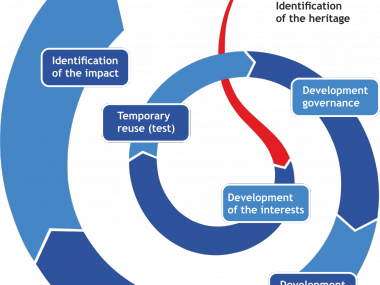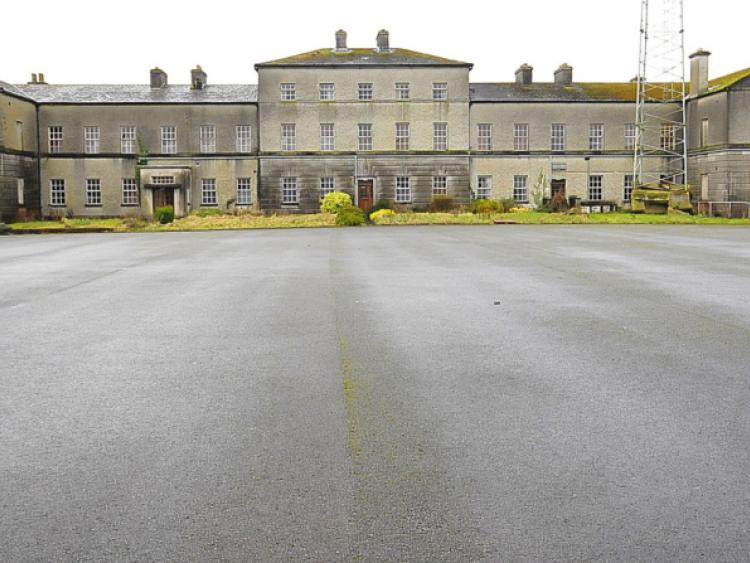Spotlight on MAPS
Edited on
12 January 2018Since September 2015 Longford County Council has been actively participating, along with eight other European Partner cities, in ‘MAPS’ (Military Assets as Public Spaces) – an Action Planning Network (APN) funded under the European URBACT Initiative.

For those of you involved in an URBACT network you will be aware that the main aim of the programme is to enable cities and towns in different EU countries to work together and develop integrated solutions to common urban and town challenges by networking, by learning from one another’s experiences and from the experts, by drawing lessons and by identifying good practices to improve urban policies.
For a long time military areas were excluded from the life of cities/towns in Europe. Due to a period of over-building in many cities and towns, and discriminated consumption of land, the issue of the re-use and regeneration of these assets is proving crucial to the development of new tools and approaches that support urban and regional planning. Starting from these local contexts, and adding the factor of the global crisis which has heavily affected the real estate market, it is easy to assume that the interest in these assets, and the potential (re)development opportunities they offer, will be larger than the construction of new buildings, public spaces and infrastructure.

But to avoid a further failure of the planning tools, there is a growing emphasis on local authorities/municipalities to be visionary and to change their approach towards the valorisation of these new areas (former military assets) of our towns and cities.
The partner cities and towns in the MAPS project want to put these military spaces at the centre of their respective regeneration policies, and develop tangible and integrated strategies that address the management and enhancement of this cultural heritage. This vast cultural heritage that is made up of different type of objects - barracks, compounds, fortifications, towers, administrative buildings, buildings for officers and others - and which have exhausted their "defensive purpose” has the potential to play a new role within our towns and environs. Many of these assets are already owned by the city administrations/municipalities, but many are still in the process of changing ownership, i.e. from National Defence Agencies to the administrations of the cities and towns. This fact in itself highlights how there is still a lack of awareness of the existing and potential cultural, social and economical values of these military spaces by the local administrations. MAPS seeks to clearly define an appropriate strategy for these sites, aimed to their future management, enhancement and contemporary use.
The aspirations of the MAPS programme is not only about redeveloping the physical space, but also the ability to interact with the social groups (stakeholders) that may be beneficial for the regeneration of these former military sites. For these reasons, the MAPS project must be able to engage in participatory activities with the largest number of stakeholders to be able to share as much as possible the expected results (physical and functional regeneration, cultural, social inclusion, economical aspects) and develop a shared strategic plan for the areas with real outcomes also for the city/town. The main goal of the MAPS project is to reverse perspectives, highlight potentialities of its heritage; albeit discussing all matters related to the plans for their future destination. It seeks to re-define the function, social role and accessibility of its former Military Heritage to promote development, sustainability and inclusiveness.
In Longford town, the location of Connolly Barracks Military which is the elected site in the MAPS project is a prime parcel of real estate located in the urban core of Longford at the end of the Main thoroughfare. Following the closure of the Barracks in 2009 and its subsequent acquisition by Longford County Council, it is considered that the Barracks provides a perfect opportunity to stimulate growth in Longford. The Council recognise that the Barracks complex is an important resource from an economic, social, environmental and cultural viewpoint and that it is fundamental to protect, develop and rethink this asset in order to benefit the community in a sustainable way in the longer term.

Through MAPS, Longford County Council expects to gain insights into urban regeneration, civic area development and function of vacated military sites and other ancient historic military structures from the URBACT partners. The Council aims to decipher how these are addressed in different contexts, to exchange best practice, adopt and apply innovative solutions and better inform effective plan-making in the regeneration of the urban area. In particular, it is envisaged that engagement in this URBACT Action Planning Network (APN) will inform the achievement of an appropriate mix of uses in the Connolly Barracks complex (aligned with the use mix of the urban core), and support
the Council in capitalising on adjacent amenities and developing connectivity and linkages.
MAPS, in highlighting and enhancing the potential reuses of the military sites, beings this assessment based on EU suggestions (through Charters, Strategic Documents, Urban Agendas) and from real projects (best practices) developed on the ground. The idea is to create a strong relation between the two practices (theoretical and practical) to eventually develop a practical tool (handbook) that will become a road map for the partners during the evolution of the project. This will be done by the preparation of an Integrated Action Plan which is formed at local level with our URBACT Local Group (ULG) but built upon and enhanced with our European Partners at the transnational workshops that take place in our Partner’s cities.
The Lead Partner City in MAPS is Piacenza, Italy. Member cities of this shared network include Serres Greece, Varazdin Croatia, Szombathely Hungary, Telsiai Lithuania, Koblenz Germany, Espinho Portugal and Cartagena Spain. Throughout the lifetime of the project, a series of transnational exchanges and workshops will take place; the main themes of which include:
- Development of the Interest – Cartagena, Spain (October 2016);
- Temporary reuse of the Heritage – Koblenz, Germany (January 2017);
- Development of the Governance for the enhancement of the Heritage former Military Assets – Esphino, Portugal (April 2017);
- Development of the sustainability of the Governance – Telsiai, Lithuania (August 2017);
- Evaluation of the Impact – the last Transnational workshop expected to be delivered in Longford (January 2018).
In preparation for the forthcoming transnational workshop ‘Temporary reuse of the Heritage’ to take place in Koblez, Germany the Connolly Barracks site has hosted a number of events and festivals in recent times. This demonstrates the capacity of the former barracks in reusing the site and bringing it back to life for the enjoyment and benefit of the local and neighbouring citizens.
These events included a special Commemorative weekend to honour the brave Longford men and women of 1916, Longford Summer Festival which from the 25th to the 26th June last, seen the former Connolly Military Barracks turned into one large tented village and display area where some excellent artisan food producers, craftspeople, home and garden ventures, musicians and local businesses were showcased. It had been 15 years since the last festival was held in Longford, so it was great to have a landmark summer event in the town once again and the recent Dead of Night Halloween festival which was a riot of colour, fun, ghoulish
costumes, flickering jack o lanterns, fireworks and spooky goings on!
Longford provides a perfect Irish template for MAPS to address the military history of the site over the last 400 years and how this can be aligned with existing cultural events and tourism initiatives both within the site and in the broader area. The rejuvenation of this important landmark military barracks can therefore not only be itself recognised as a beacon of social, cultural and economic exchange but also act as a ‘kick start’ or nucleus for the same to happen in the adjoining urban area.
To view more about their project view their URBACT page here http://urbact.eu/maps
Submitted by Caroline Creamer on
